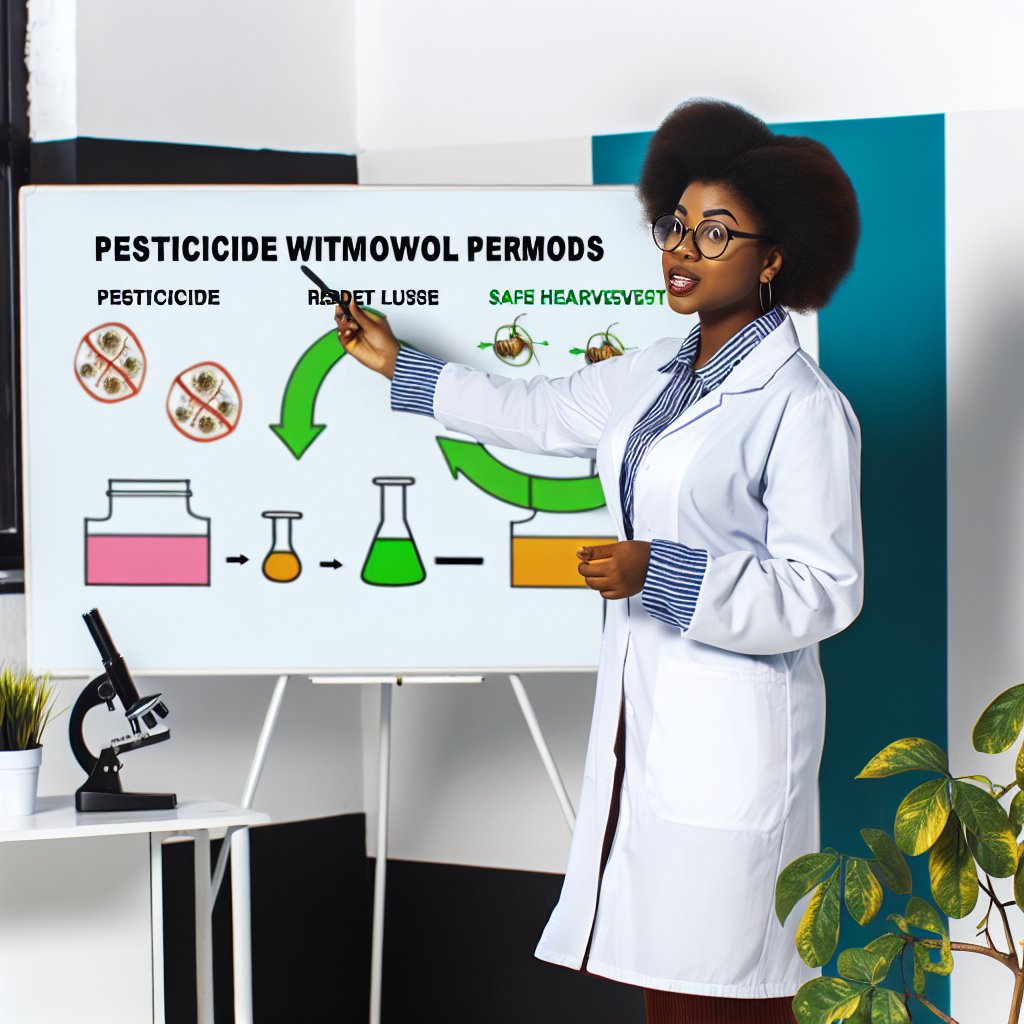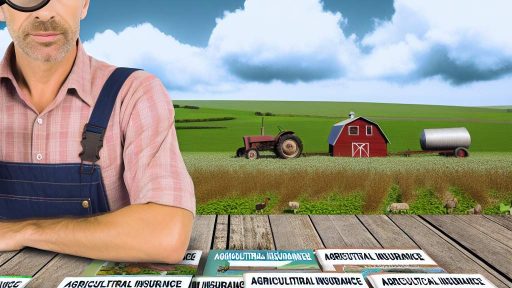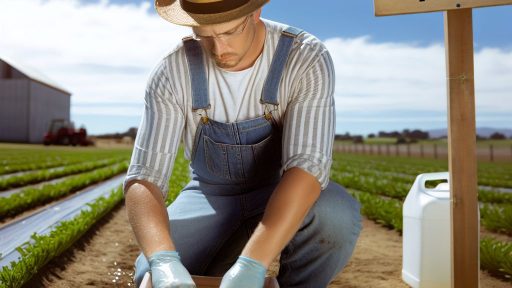Understanding Pesticide Withdrawal Periods
Definition of Pesticide Withdrawal Periods
Pesticide withdrawal periods refer to the time required after pesticide application before harvesting crops.
This period allows the pesticide residues to diminish to safe levels.
Farmers strictly monitor these times to comply with safety regulations.
Importance of Pesticide Withdrawal Periods
Understanding withdrawal periods is crucial for food safety.
These periods protect consumers from harmful pesticide exposure.
Additionally, they help maintain market access for agricultural products.
Compliance with withdrawal periods fosters consumer trust in food supply.
Determining Withdrawal Periods
Withdrawal periods vary based on the pesticide used and the crop type.
Regulatory bodies establish these timeframes through rigorous testing.
Therefore, farmers should consult specific guidelines for each pesticide.
Pesticide Residue Monitoring
Regular monitoring of pesticide residues ensures compliance with safety standards.
Testing occurs at various stages of the agricultural supply chain.
This process safeguards public health and the environment.
Consequences of Ignoring Withdrawal Periods
Failing to adhere to withdrawal periods can lead to significant consequences.
First, it can result in pesticide residue violations, leading to penalties.
Transform Your Agribusiness
Unlock your farm's potential with expert advice tailored to your needs. Get actionable steps that drive real results.
Get StartedSecond, it can damage a farm’s reputation and consumer trust.
Lastly, it may restrict product access to certain markets.
Regulatory Framework
Understanding the Laws Governing Withdrawal Periods
Withdrawal periods are crucial in agricultural practices.
They help ensure food safety and protect consumer health.
Regulatory bodies enforce these periods based on extensive research.
The laws governing withdrawal periods vary by region.
In the United States, the Environmental Protection Agency (EPA) plays a key role.
The EPA evaluates all pesticide products before they reach the market.
This evaluation assesses potential health risks associated with each pesticide.
Once products are approved, they are assigned specific withdrawal periods.
These periods indicate how long farmers must wait before harvesting.
For example, a product might have a withdrawal period of seven days.
Farmers must adhere strictly to these regulations.
Noncompliance can result in legal penalties and safety risks.
International Regulatory Perspectives
Other countries have their own regulations governing withdrawal periods.
For instance, the European Union has established rigorous standards.
It employs a precautionary principle to ensure consumer safety.
International guidelines often provide frameworks for best practices.
Many countries collaborate on these standards to promote global safety.
Factors Influencing Withdrawal Periods
Several factors affect the length of withdrawal periods.
Pesticide type and the method of application are significant considerations.
Additionally, crop type and environmental conditions play a role.
Soil characteristics can influence how quickly a pesticide breaks down.
Weather conditions, such as rain, can also impact residue levels.
Showcase Your Farming Business
Publish your professional farming services profile on our blog for a one-time fee of $200 and reach a dedicated audience of farmers and agribusiness owners.
Publish Your ProfileThe Role of Research and Monitoring
Research is vital for establishing and updating withdrawal periods.
Ongoing studies monitor pesticide residues in crops and soils.
New findings can lead to adjustments in the regulations.
Farmers must stay informed about these updates to comply with laws.
Education about withdrawal periods enhances safe farming practices.
Factors Influencing Withdrawal Periods
Chemical Properties
Chemical properties of pesticides significantly affect their withdrawal periods.
First, the toxicity level plays a crucial role.
Higher toxicity levels generally require longer withdrawal periods.
Furthermore, the chemical structure determines how quickly a pesticide breaks down.
If a pesticide is stable, it may remain in the environment longer.
Conversely, rapidly degrading chemicals may need shorter withdrawal periods.
Additionally, the formulation of the pesticide matters.
Granular, liquid, and oil formulations might behave differently in soils.
Each formulation has unique interactions with plant systems.
Hence, the specific pesticide type influences its withdrawal requirements.
Environmental Conditions
Environmental conditions also play a significant role in withdrawal periods.
Soil type impacts how fast a pesticide degrades.
Sandy soils tend to leach chemicals faster than clay soils.
Rainfall intensity during the application can wash pesticides away.
Consequently, heavy rains may lead to shorter effective lifespans of the pesticide.
Temperature is another critical factor affecting pesticide degradation.
Higher temperatures generally increase chemical breakdown rates.
Moreover, the presence of microorganisms can enhance degradation.
Soils rich in microbial activity may break down pesticides more quickly.
Therefore, understanding both soil and weather impacts is vital for accurate withdrawal periods.
Find Out More: Environmental Considerations In Pesticide Use
Impact of Improper Adherence to Withdrawal Periods
Health Risks
Improper adherence to pesticide withdrawal periods poses serious health risks.
Consumers may unknowingly ingest harmful pesticide residues.
This can lead to acute and chronic health issues.
For instance, organophosphate pesticides can affect the nervous system.
Long-term exposure may result in developmental problems in children.
Additionally, prolonged exposure can increase cancer risks.
Farmworkers face heightened risks due to direct pesticide applications.
Protective measures are crucial to minimize health hazards.
Economic Consequences
Failure to observe withdrawal periods can have significant economic impacts.
Farmers may face severe financial penalties for non-compliance.
Legal actions can arise from contaminated products reaching consumers.
Furthermore, recalls of contaminated products can be costly.
Once recalled, a company’s reputation may suffer long-lasting damage.
Lost customer trust can result in reduced sales and market share.
Showcase Your Farming Business
Publish your professional farming services profile on our blog for a one-time fee of $200 and reach a dedicated audience of farmers and agribusiness owners.
Publish Your ProfileAdhering to withdrawal periods protects both health and profitability.
Investing in proper education increases compliance rates among farmers.
Gain More Insights: Building Resilient Farms with Supportive Rural Development Policies
Best Practices for Farmers: How to Manage and Track Withdrawal Periods
Understanding Withdrawal Periods
A withdrawal period is the time needed before a harvested crop is safe to consume.
Farmers must comply with these periods to ensure food safety.
Knowing the specifics of each pesticide is crucial for effective use.
Maintaining Accurate Records
Keeping precise records helps track pesticide applications and withdrawal periods.
Use a dedicated notebook or software for this purpose.
Include application dates and the respective withdrawal periods.
Regularly update your records to reflect any changes in practices.
Planning Crop Cycles
Effective crop planning considers pesticide application and withdrawal timeframes.
Choose crop rotations that align with withdrawal periods.
This strategy reduces the risk of harvesting too early.
Consult local agricultural experts for tailored advice on planning.
Educating Employees
Training staff on managing withdrawal periods is essential.
Provide them with resources on pesticide regulations.
Regular workshops can reinforce key practices.
Encourage communication regarding any changes in applications.
Utilizing Technology
Modern technology offers tools to help manage withdrawal periods.
Use mobile apps designed to track pesticide applications.
These tools can send reminders about upcoming withdrawal deadlines.
Explore options that integrate with your existing farm management systems.
Consulting with Experts
Don’t hesitate to seek professional guidance.
Consult agronomists or extension agents regarding best practices.
They can provide updated information on pesticides and regulations.
Building relationships with local agricultural offices is beneficial.
You Might Also Like: Best Practices for Meeting Food Safety Standards in Farming

Case Studies: Successful Management of Pesticide Withdrawal Periods in Agriculture
Effective Strategies in Crop Production
Farmers employ strategic planning to manage pesticide withdrawal periods effectively.
For instance, Green Fields Farm uses detailed scheduling to maximize crop quality.
The farm carefully tracks application timings and harvest schedules.
This proactive method ensures that crops maintain high safety standards.
Additionally, they communicate regularly with agronomists for updated guidelines.
Innovations in Livestock Management
Livestock producers face unique challenges with pesticide withdrawal periods.
Sunny Pastures Ranch implemented a rotation system to address these issues.
This system reduces pesticide exposure in animal feed.
Consequently, they observed fewer health issues among livestock.
Furthermore, it improves the overall quality of meat products.
This approach promotes consumer trust and increases market value.
Collaboration with Agricultural Experts
Partnerships with agricultural experts enhance management of withdrawal periods.
Blue River Cooperative has established connections with local agricultural universities.
Showcase Your Farming Business
Publish your professional farming services profile on our blog for a one-time fee of $200 and reach a dedicated audience of farmers and agribusiness owners.
Publish Your ProfileThese collaborations facilitate research on effective pesticide application practices.
As a result, farmers receive real-time updates on best practices.
This collaboration reduces risks associated with pesticide residues.
Successful Case in Organic Farming
Organic farmers adopt distinct approaches to manage pesticide withdrawal periods.
Willow Creek Organic Farms emphasizes natural pest management methods.
They rely on beneficial insects and companion planting strategies.
This minimizes the need for synthetic pesticides entirely.
Ultimately, their commitment to organic practices attracts environmentally conscious consumers.
As a result, they achieve a premium pricing advantage in the marketplace.
Learn More: Agricultural Insurance for Livestock Farmers Explained
Technological Advances: Tools and Software for Monitoring Withdrawal Periods
Introduction to Monitoring Tools
Effective monitoring of pesticide withdrawal periods is crucial for agricultural safety.
Advanced tools and software have emerged to assist farmers and agronomists.
These technologies improve accuracy and compliance in agricultural practices.
Types of Monitoring Software
Several types of software are available to monitor pesticide withdrawal periods.
- Field Management Software: This software tracks pesticide application in real-time.
- Compliance Tracking Tools: These tools help ensure adherence to legal regulations.
- Data Analysis Applications: They analyze usage trends and predict future needs.
Benefits of Using Technology
Integrating technology offers numerous benefits for monitoring withdrawal periods.
First, it enhances efficiency in tracking pesticide applications.
Second, it reduces the risk of human error in record-keeping.
Additionally, it helps in making informed decisions based on data.
Impact on Compliance and Safety
By utilizing advanced tools, farmers improve compliance with safety standards.
This leads to safer food production and better public health outcomes.
Moreover, accurate tracking contributes to environmental sustainability.
Real-World Applications
Many farmers successfully implement these technologies in their operations.
For example, AgriTech Solutions provides a comprehensive software package.
This package includes features for managing pesticide schedules effectively.
Additionally, EcoFarm Innovations offers real-time data tracking capabilities.
Future Trends in Monitoring Technology
The future of monitoring withdrawal periods looks promising.
Artificial intelligence will likely play a key role in data analysis.
Furthermore, mobile applications will enhance accessibility for farmers.
As technology evolves, farmers will continue to benefit from these advancements.
Future Trends: The Evolution of Pesticide Regulations and Their Implications for Farmers
Shifting Regulatory Landscape
Pesticide regulations are evolving rapidly across the globe.
Governments are tightening restrictions on harmful chemicals.
Innovation in pest control methods is becoming essential for compliance.
Farmers must stay informed about these changes to adapt effectively.
Technological Advancements
New technologies are reshaping pesticide application and management.
Precision agriculture offers farmers tools for targeted pesticide use.
These methods minimize unnecessary chemical exposure to crops.
Additionally, data analytics enables smarter decision-making regarding pest management.
Impacts on Crop Management Strategies
Farmers must rethink their crop management approaches.
Integrated Pest Management (IPM) is gaining prominence.
IPM combines biological, cultural, and chemical practices effectively.
Showcase Your Farming Business
Publish your professional farming services profile on our blog for a one-time fee of $200 and reach a dedicated audience of farmers and agribusiness owners.
Publish Your ProfileAdopting IPM reduces reliance on chemical pesticides significantly.
Consumer Awareness and Demand
Consumer awareness about pesticide use is increasing steadily.
Many consumers prefer organic and sustainably grown products.
This trend influences farmers to adopt safer and more eco-friendly practices.
As demand grows, producers must adjust their operations accordingly.
Policy Implications
Policy changes are driving the sustainability agenda forward.
Governments are introducing incentives for adopting sustainable practices.
Farmers who comply with new regulations may benefit from subsidies.
Consequently, this could lead to increased investment in eco-friendly technologies.
Global Collaboration
International organizations are promoting pesticide reduction initiatives.
Collaboration among countries can enhance knowledge sharing.
Farmers can access better resources through global partnerships.
This collective effort fosters a unified approach to sustainable agriculture.
Additional Resources
The 2024 Farm Bill: H.R. 8467 Compared with Current Law
Open Burning Rules for Georgia | Environmental Protection Division




